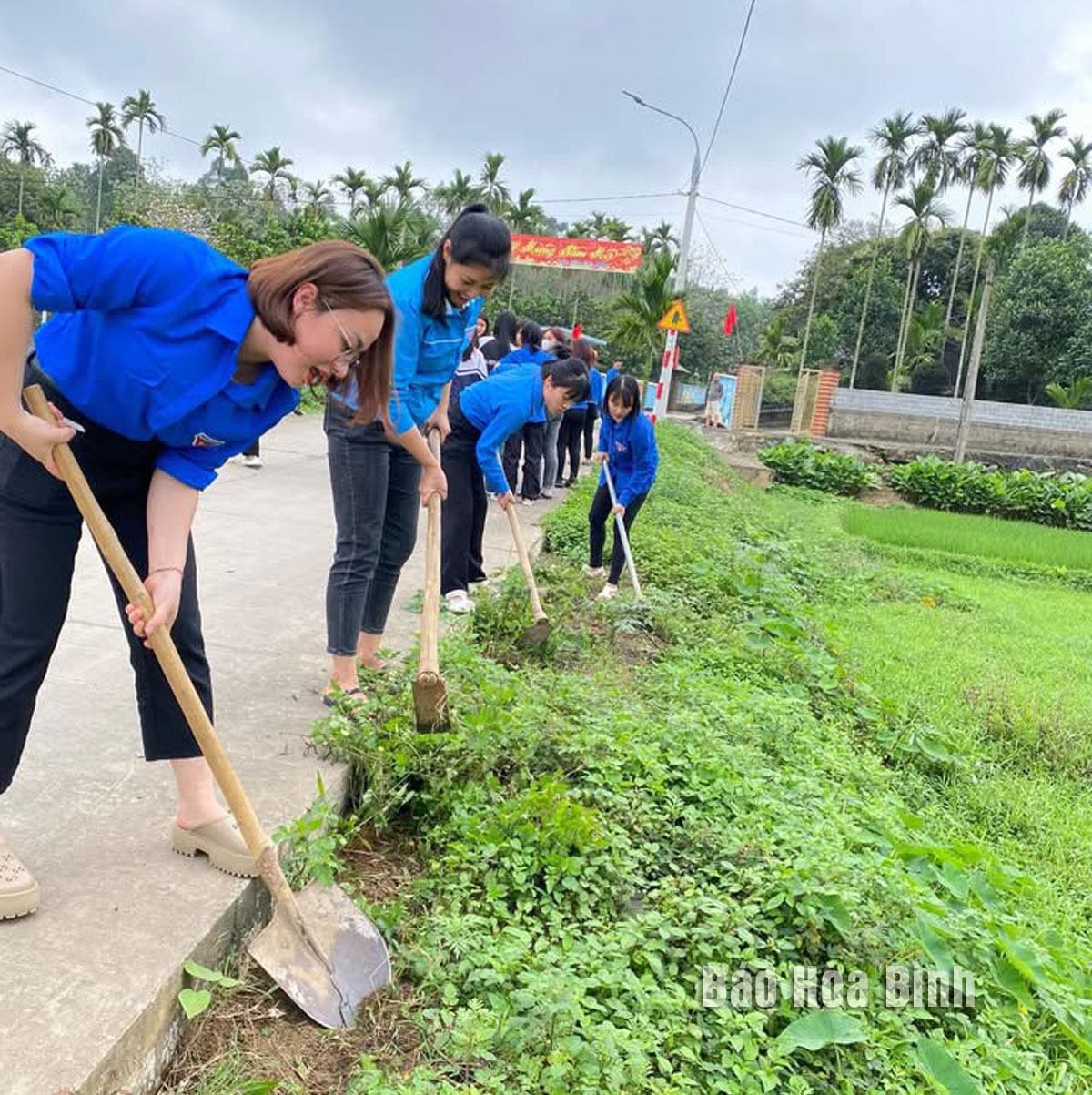



The members of the youth union in Khang Dinh hamlet, Yen Mong commune, Hoa Binh city engage in a clean-up day in the locality.
Rural development isn't simply about meeting criteria, it is about improving people's quality of life. The success of Hoa Binh city's rural transformation actually stemmed from a comprehensive approach that engaged the entire political system and local people.
The city issued multiple action plans, focusing on mobilising resources from various sources, including state budgets, social capital, and voluntary public contributions. Communications work was particularly given due attention, helping raise public awareness of the significance of new-style rural area programme.
The impact of community involvement is evident throughout the region. In Can hamlet of Doc Lap commune, the city's only especially disadvantaged area, 30 households voluntarily donated land to expand the main road from 2 to 5 metres, facilitating transportation and local economic development.
Dinh Van Bay, one of the first residents to donate land, said with the new road, his family opened a grocery store to increase income. Rural areas have been transformed with improved roads, schools, medical stations, and village cultural houses.
Between 2011 and 2024, thousands of Hoa Binh citizens contributed labour and financial resources valued at 110 billion VND (4.31 million USD). Notable examples include Nguyen Xuan Giao from Yen Mong commune who donated 2,232 square metres of land, Nguyen Duc Chinh from Hoa Binh commune who contributed 1,100 square metres of land and 70 million VND for rural transportation; and Dinh Van Hoan who donated 828 square metres of land and 45 million VND.
Beyond infrastructure development, locals actively participated in environmental protection and security initiatives such as "green-clean-beautiful Saturday", "farmer-managed roads", "bright and safe road", "waste classification at households”, and security camera installations. Furthermore, they embraced effective economic development models like safe vegetable production by Doc Lap Cooperative and VietGAP-standard fish cage farming, helping improve income and living standards.
The transformation was reflected in impressive statistics, with nearly 95% of village paths and alleys having been concreted, facilitating travel and transport of goods. Irrigation systems, electricity, schools, and medical stations were invested to meet growing public demands. Notably, the poverty rate dropped dramatically from 7.8% in 2015 to under 1.5% by late 2024.
The new-style rural area building programme transcended beyond economic development to enriching cultural and spiritual lives, with an array of traditional festivals having been preserved and schools having been upgraded.
Chairman of the city People’s Committee Pham Anh Quy attributed the programme’s success to the public consensus. Through effective communication, local residents contributed not only resources but also creativity, helping improve criteria quality.
The leadership role of Party committees and authorities was evident in implementing policies and solutions appropriate to local realities, he said, adding the dedication and determination of officials created trust and motivation for all citizens. Additionally, the harmonious combination of state budget and social contributions helped the city optimise resources, ensuring project progress and quality.
Completing the new-style rural area building target is a milestone in the locality’s development journey, helping the city affirm its position in the new period.